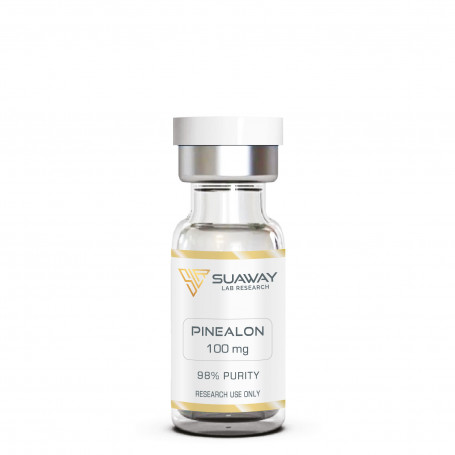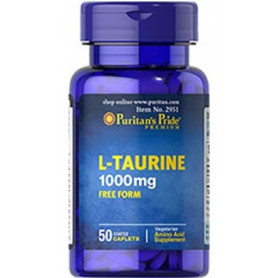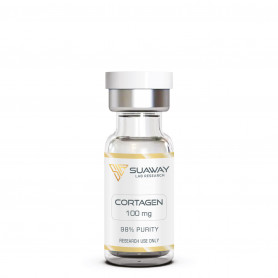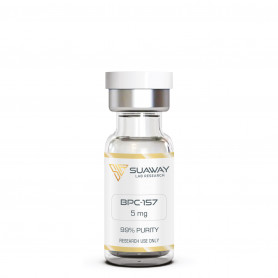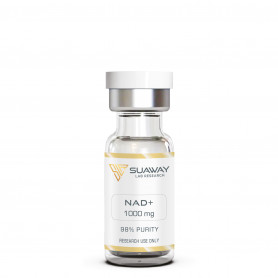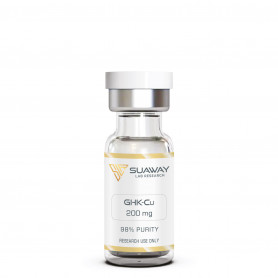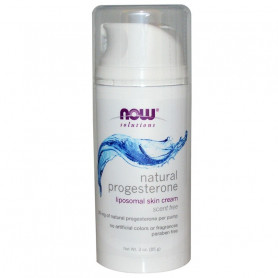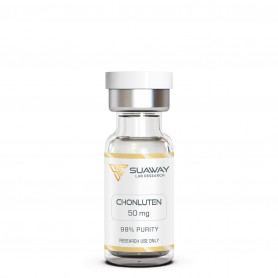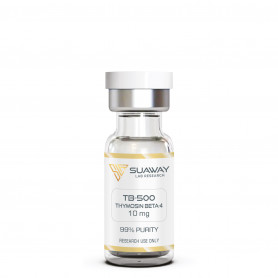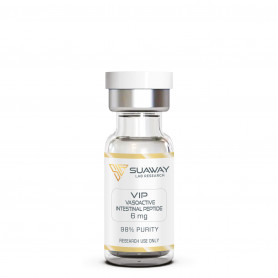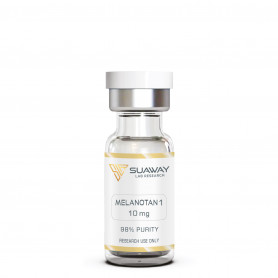PINEALON - 100 mg
A small number of peptides may attach directly to the DNA to trigger biological processes, however, the majority of peptides interact with receptors to have an impact on the body.
The Pinealon peptide, one of these bioregulator peptides, has neuroprotective effects and is a very promising candidate for use in the treatment and management of a variety of neurological illnesses. Pinealon is known to have effects on the central nervous system that change behavior and also shield neurons and other cell types from oxidative damage.
The capacity of this peptide to cross the nuclear membrane, cellular membrane, and the blood-brain barrier is by far its greatest benefit. This is one of the explanations for how it can communicate directly with DNA molecules.
Pinealon has been linked to potential uses including:
- Anti-Aging effects
-Neuron Protection
- Treatment of depression
- Treatment of brain disorders including Alzheimer’s disease and Parkinson’s disease
- Memory enhancement
- Sleep Reagulation
Description
STRUCTURE
Sequence: Glu-Asp-Arg
Molecolar Formula: C15H26N6O8
Molecular Weight: 418.407 g/mol
Peptide Purity: Greater than 98%
Other details: No TFA Salt
Storage: Lyophilized peptide must be stored at -20°C and peptide solution at 4°C.
Pinealon has low oral and excellent subcutaneous bioavailability.
DESCRITPION
A small peptide with just three amino acids is called Pinealon. It is one of a small number of synthetic peptides known as peptide bioregulators because of its capacity to modify the levels of gene expression by interacting directly with DNA. Pinealon is hypothesized to help defend a variety of cell types, including neurons, from the effects of hypoxia and has been connected to behavior modulation. Pinealon may improve issues with drug metabolism, circadian rhythm difficulties, memory, learning, and more by directly affecting the pineal gland.
Pinealon does not seem to attach to the cell surface or cytoplasmic receptors as the majority of peptides do.
It was hypothesized that Pinealon may be tiny enough to pass through lipid bilayers (such as the nuclear or cell membranes) and so be able to interact with DNA directly. Pinealon interacts with DNA by directly penetrating both the nuclear membrane and the cell membrane, according to research done on cell cultures (HeLa cells).
This explains the many effects of the peptide that are not explained by receptor interactions and makes Pinealon a gene expression regulator.
Anti-Aging
The central nervous system may benefit from Pinealon's anti-aging properties. When measured using biological age markers, Russian research suggests that Pinealon and a related peptide called Vesugen are anabolic in the brain and may delay the pace of aging.
Additionally, Pinealon is active in cells beyond the central nervous system. Research demonstrates that the peptide also has an impact on muscle cells, where it modifies irisin expression.
Irisin is crucial for preserving muscle cells during exercise, encourages fat burning, and is also known to encourage telomere lengthening. Pinealon increases telomere protection and delays the effects of aging, and oxidative stress by lengthening the irisin's lifetime. Levels of the enzyme have been directly connected to calorie restriction, one of the only practices shown without a shadow of a doubt to increase life and enhance general fitness. In healthy people, plasma irisin levels are directly correlated with telomere length. It is interesting to note that there is proof irisin is active outside of muscle cells, suggesting Pinealon may have anti-aging benefits that are widely felt throughout the body, including the brain.
Neuron Protection
Pinealon seems to shield neurons from oxidative stress and so safeguard cognitive and motor coordination, according to research in foetal rats. Both the buildup of reactive oxygen species and the number of necrotic cells in the brain of these rats were shown to have significantly decreased as a result of the investigation. In other words, Pinealon guards against neuronal aging.
The results of the rat research that was previously described have been verified in additional studies and expanded upon in others. Understanding that the peptide alters the cell cycle as part of its protection against cell death led to confirmation that Pinealon lowers necrotic cell death and protects against reactive oxygen species.
It is interesting to note that Pinealon alters the cell cycle by triggering pathways that promote growth. Normally, this would increase the number of cells, but in an environment of oxidative stress, this function just counteracts some of the negative effects of reactive oxygen species.
It has also been shown via research on adult rats without oxygen that Pinealon boosts the resilience of neurons to hypoxic stress. By enhancing innate anti-oxidative enzyme systems and reducing the excitotoxic effects of N-methyl-D-aspartate, it seems to accomplish this. An amino acid derivative called N-methyl-D-aspartate (NMDA) may destroy nerve cells by overexciting them. It has been shown that NDMA becomes excessively active during alcohol withdrawal and is at least partially to blame for the "shakes" or delirium tremens that chronic drinkers experience during withdrawal.
NDMA has been connected to nerve death in ischemic stroke and traumatic brain injury.
Recently, researchers discovered irisin in the brain, where it plays crucial functions in neuronal differentiation, proliferation, and energy consumption. Irisin has previously been explored in the context of protecting muscle cells. It has been discovered that irisin levels in the central nervous system trigger genes in the hippocampus that are crucial for memory, learning, and the health of all neurons. The relationship between physical activity and cognition may finally be established in rats, according to research, which shows that exercise directly increases irisin levels in the brain. Irisin is thought to be the messenger that facilitates communication between the central nervous system and the skeletal muscle during exercise. By changing the expression of the gene that codes for the enzyme, Pinealon raises levels of irisin. Because the enzyme lives longer as a result, irisin levels are raised.
Depression
Pinealon has been shown via studies in cultures of brain cortex cells to increase 5-tryptophan hydroxylase expression by altering the epigenome. Serotonin, a peptide with proven neuroprotective and geroprotective properties, is produced and secreted by the enzyme 5-tryptophan hydroxylase. Additionally, selective serotonin reuptake inhibitors, a type of anti-depressive drug, often target it as the signaling molecule (SSRIs). However, there are a number of negative effects associated with SSRIs, and increasing serotonin levels naturally may provide a more physiologic approach to treating depression while reducing side effects.
Pinealon Protects Cells from Caspase-3 and Cell Death
Research into the peptide's effects in rat models of ischemic stroke led to the discovery that Pinealon might impact the cell cycle. According to these investigations, Pinealon has an impact on the cytokine signaling pathway that typically raises the levels of the caspase-3 enzyme. Caspase-3 is directly in charge of starting apoptosis, or the genetically programmed controlled death of a cell. Pinealon inhibits at least one mechanism leading to cell death by regulating caspase-3, which lessens the impact of oxygen deprivation during a stroke.
However, Caspase-3 is generally always active, not only in neurologic tissue. Research on heart attack simulations suggests that Pinealon may lower caspase-3 levels after myocardial infarction. The short peptide may be used to treat heart attacks as well as to stop the long-term remodeling that results in so much dysfunction after myocardial infarction.
Pinealon is effective in reducing caspase-3 expression in skin cells. Pinealon promotes cell proliferation in both young and elderly animals by lowering apoptosis in the skin. It has been shown that doing so accelerates the regeneration process and counteracts age-related disease in the skin. Pinealon may potentially be used in severe burn therapy as well as sun protection as part of a multifaceted approach to wound healing.
Sleep Regulation
Given its name, it should come as no surprise that Pinealon influences both sleep behavior and the sleep-wake cycle. According to research, the pineal gland may assist to control the dysfunction brought on by shift work and other activities (such as long-distance travel) that disturb regular sleep patterns. When the circadian rhythm is disrupted, the peptide seems to return the pineal gland to its normal state, which helps with sleep, depression, mood, blood pressure, and other things.
There is a direct correlation between the ability to regulate sleep and aging rates. The effects of disturbed sleep on the body are disastrous and include negative effects on mood, heart health, wound healing, and cognition. Therefore, Pinealon may assist in lessening the impacts of sleep disruption and so counteracting the effects it has on aging. This may help those with organic diseases that affect sleep-wake cycles as well as those whose occupations compel them into irregular sleep patterns.
REFERENCES
L.I. Fedoreyeva et al., "Penetration of short fluorescence-labeled peptides into the nucleus in HeLa cells and in vitro specific interaction of the peptides with deoxyribooligonucleotides and DNA" [PubMed]
V.N. Meshchaninov et al., "Effect of synthetic peptides on aging of patients with chronic polymorbidity and organic brain syndrome of the central nervous system in remission" [PubMed]
V. Khavinson et al., "Short Peptides and Telomere Length Regulator Hormone Irisin" [PubMed]
K.S. Rana et al., "Plasma irisin levels predict telomere length in healthy adults" [PubMed]
A. Arutjiunyan et al., "Pinealon protects the rat offspring from prenatal hyperhomocysteinemia" [PMC]
V. Khavinson et al., "Pinealon increases cell viability by suppression of free radical levels and activating proliferative processes" [PubMed]
L.S. Kozina "Investigation of antihypoxic properties of short peptides" [PubMed]
V.K. Khavinson et al., "Short Peptides Stimulate Serotonin Expression in Cells of Brain Cortex" [PubMed]
A.M. Mendzheritskii et al., "Regulation of content of cytokines in blood serum and of caspase-3 activity in brains of old rats in model of sharp hypoxic hypoxia with Cortexin and Pinealon" [PubMed]
M. Agosto et al., "Serum Caspase-3 p17 Fragment Is Elevated in Patients With ST-Segment Elevation Myocardial Infarction: A Novel Observation" [JACC Journal]
M.A. Voicekhovskaya et al., "Effect of bioregulatory tripeptides on the culture of skin cells from young and old rats" [PubMed]
A.S. Bashkireva et al., "The peptide correction of neurotic disorders among professional truck-drivers" [PubMed]
DISCLAIMER
This product is intendend for lab research and development use only. These studies are performed outside of the body. This product is not medicines or drugs and has not been approved by the FDA or EMA to prevent, treat or cure any medical condition, ailment or disease. Bodily introduction of any kind into humans or animals is strictly forbidden by law. This product should only be handled by licensed, qualified professionals.
All product information provided on this website is for informational and educational purposes only.

